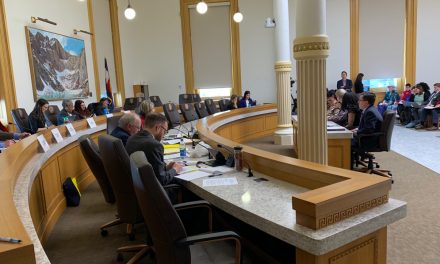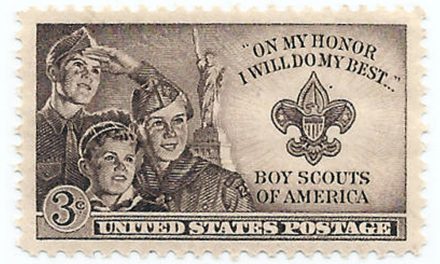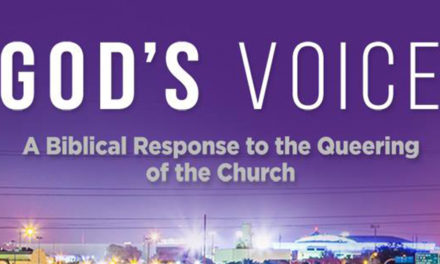A story in The Daily Wire describes a 10-year-old Canadian boy who was photographed and featured for Huck magazine dressed in “drag” – hyper-exaggerated and overly-sexualized female makeup and clothing. The boy has performed in a number of venues – including an appearance at an adult night club. One of the photos that did not make it into the feature story, but is still circulating on the internet, shows the boy posing with a naked man – sporting high heels and a wig – who was the winner of “RuPaul’s Drag Race” in Season 7.
Celebrated by the Press
The article and photos in Huck magazine are deeply disturbing, seeing young boys as they dress and perform as miniature, sexually-provocative women. But it’s also disheartening to see major media outlets pushing this “drag kids” agenda. Here are just a few recent examples:
- In January 2018, the Daily Mail featured a 10-year-old from New York who started “a drag club for KIDS so they can express themselves in a ‘positive, encouraging, and safe’ space” – four years earlier, the child appeared in drag in an online music video with adult drag queens.
- In August 2018, CNBC lauded the same 11-year-old boy as “a drag superstar and an LGBTQ activist” in New York who “encourages LGBTQ youth to be themselves” – Good Morning Americapromoted the same child three months later.
- In October 2018, NBC News Digital spotlighted a number of “drag kids” who appeared at an annual drag convention in New York where an adult drag performer billed them as “Baby Drag Artists” – and called for more young drag artists to celebrate and promote.
These mainstream media outlets encourage these young boys for “being who they are,” for standing up to critics and “haters,” and for being an inspiration to other children who might want to dress and perform as the opposite sex.
In Schools and Libraries
In addition to the media, gender-confusing messages are also being fed to children through local schools and libraries. California, for example, passed the FAIR (Fair, Accurate, Inclusive and Respectful) Education Act in 2011 which mandated inclusion of LGBT viewpoints in K-12 textbooks. Textbooks with these perspectives are now being adopted throughout the state. One series of lessons introduces second graders to José Julio Sarria as a “Champion of Gay Rights” who unsuccessfully ran for office in 1961. The children are instructed, “He told people he was gay and that sometimes he dressed as a woman. He was the first person to do this when running for office.”
Local libraries have hosted “Drag Queen Story Hour” events across the U.S. – from New York to Los Angeles and from Mobile to Milwaukee. Some of the performers openly mock Christians. In Boston, a group of men dressed as nuns, calling themselves the “Sisters of Perpetual Indulgence” read stories to children. At the Brooklyn Public Library, a performer known as “Reverend Yolanda,” read to children. At a Colorado Springs event, children were offered photos with the drag queens and invitations to kids’ drag competitions.
How do We Respond?
As Christians, we hold to the biblical – and scientific – truth that God created humans male and female in His image. God’s design of us as male and female is good – men and women are distinct but equally valuable. It’s wrong to blur those distinctions, and it’s especially wrong to lead children into confusion and sin about sexuality and identity.
As believers we are also admonished to speak the truth in love, emulating Christ who ministered to sinners with both grace and truth. Here are just a few ideas for responding to this issue:
- We respond humbly. As someone who struggled with masculinity and homosexuality, I am reminded of my own sins as I respond to sexual brokenness in the world around me. All of us have been affected by sin, including our sexuality and relationships. And those of us who believe in Jesus are blessed to receive His forgiveness and salvation – not because we earned it, but as a gift.
- We respond prayerfully. Several years ago, Focus on the Family President Jim Daly was talking about his outreach to a prominent LGBT activist. He said something that stuck with me, “When was the last time you prayed for him?” As a result of that challenge, I make a regular effort to pray for individuals caught in homosexuality and transgenderism. In fact, I’ll be adding these children to my list, today.
- We respond by getting educated and equipped. As a father of three sons, I understand the fear and anger parents may feel as they see the growth of sexual brokenness in our culture. We want to protect our children. But the reality is, in today’s world, it’s not if your children will be exposed to these issues but when. One of the best things a parent can do is instill in children a knowledge and understanding of God’s design for sexuality and marriage. We’ve created a number of free resources to help parents understand and talk with children about these subjects.
- We respond kindly, truthfully and courageously. As I’ve read these stories about children who are dressing and performing as the opposite sex, I feel anger about the exploitation and sexualization of children. Rather than protecting their children, parents are exposing them to hyper-sexualized, distorted activities and performances. Rather than directing children toward embracing their bodily reality – kindly and without shame – parents are steering their children toward sexual brokenness and confusion. But I’m also disheartened by individuals who respond online with vicious, derogatory comments and name-calling. While academia and the media embrace and applaud sexual sin, Christians can respond clearly, courageously and kindly – without the insulting language and comments that are so prevalent on social media.
Let’s model grace and compassion as we speak the truth about God’s design for sexuality. And let’s continue to teach and proclaim God’s love, forgiveness and transforming power for all people.






